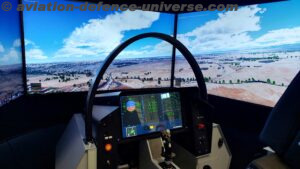- Forecast for 27,000 new professional pilots starting in late 2021
- Global demand forecast for more than 260,000 new pilots over the next 10 years
Montreal. 09 November 2020 . CAE released its 2020-2029 CAE Pilot Demand Outlook. The renewed 10-year view offers fleet operators key insights on the future need for professional pilots in both commercial and business aviation, building on the markets’ key drivers, variables, and trends. This is the third edition of the CAE Pilot Demand Outlook and it is released as part of CAE’s participation in Air Transport Month 2020 and the Global Airline Training and Simulation Virtual Conference (Global ATS-V).
CAE investigated market data as airlines and operators are navigating the current downturn in passenger air travel and are pursuing recovery strategies following the outbreak of the global COVID-19 pandemic. While the demand for pilots has decreased significantly during 2020, CAE’s analysis shows that the active pilot population is expected to return to 2019 levels in 2022. According to the 2020-2029 CAE Pilot Demand Outlook, retirement and attrition are expected to continue to be a challenge for the civil aviation industry as air travel recovers progressively. This is expected to drive an acute demand for pilots, resulting in an estimated short-term need for approximately 27,000 new professional pilots starting in late 2021.
The report demonstrates that despite the short-term decline in the number of active pilots due to the impact of COVID-19, the civil aviation industry is expected to require more than 260,000 new pilots over the next decade. CAE‘s analysis shows that the fundamental factors influencing pilot demand prior to the COVID-19 outbreak remain unchanged. Age-based retirement and fleet growth were, and are expected to remain, the main drivers of pilot demand.
“With the 2020-2029 CAE Pilot Demand Outlook, we hope to arm the industry with the insights that will help the global aviation community understand, rethink, and learn about how to continue to build and grow the supply of highly qualified pilots as the industry emerges from the downturn,” said Nick Leontidis, CAE Group President, Civil Aviation Training Solutions. “Disruptive events are opportunities to innovate and collaborate. With airlines, operators, authorities, and aircraft manufacturers, CAE will continue to shape the future of pilot training to ensure the highest level of safety and security of air travel.”
CAE‘s outlook also includes ideas on how to leverage digital technology and analytical insights to enhance pilot training. In the new outlook, CAE is sharing how it believes the global aviation community can harness the power of artificial intelligence to meet aviation’s crewing needs of the next decade, as well as the ever-evolving safety standards.
























































































































